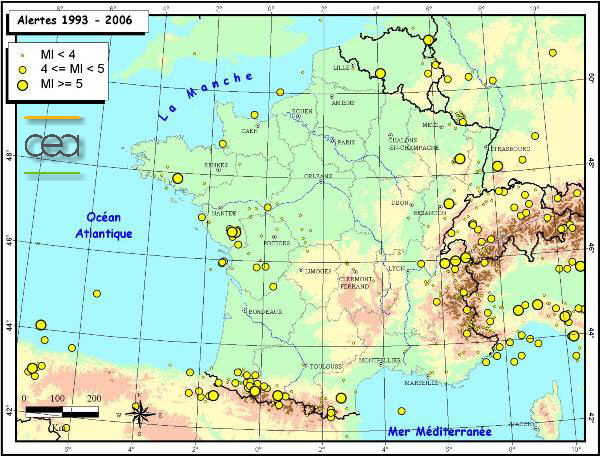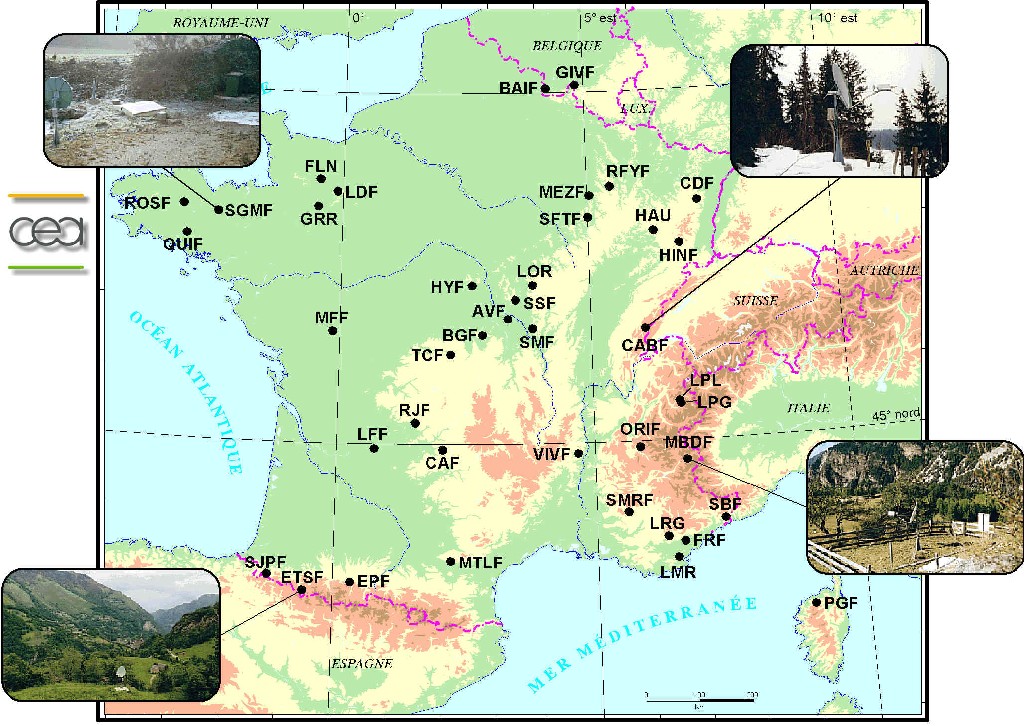 |
 |
 |
 |
 |
 |
 |
 |
 |
 |
Strong earthquake alert |
 |
 |
 |

 |
The earthquake in Lambesc
(Bouches-du-Rhône) on July 11, 1909 caused the death of 44 people. |
We aim to detect strong earthquakes quickly, locate them, compute their magnitude,
and alert
the authorities accordingly.
The environmental assessment and monitoring Department (Département analyse, surveillance, environnement, DASE), which comes under the military applications Division (Direction des Applications Militaires, DAM), is assigned the following duties:
 |

 |
Notify the french civil security service within two hours in the event of an earthquake of magnitude greater than 4 in France and bordering countries, |
 |

 |
Help to alert the European Council in the event of an earthquake of magnitude greater than 5 in the Euro-Mediterranean area (in partnership with EMSC: Euro-Mediterranean Seismological Centre), |

 |
Map of earthquakes that led to alerts in France between 1993 and 2006. |
|
 |
|
 |
 Principles: Principles: |
 |
|
 |
 |

 |
The processing of signals from French stations is automatic. The energy in each station signal is computed continuously. When certain criteria are met (exceeded thresholds) within a period compatible with the seismic wave network crossing time, the duty seismologist is notified and an automatic epicenter location procedure is engaged. After prior adjustment (as required), the seismologist confirms and formats the results, and sends them to the French civil security service within two hours. |
 |

 |
In the Euro-Mediterranean area, automatic locations computed in near real-time by numerous European bodies are centralized at the EMSC (Euro-Mediterranean Seismological Center), which is located on CEA/DAM - Ile de France premises in Bruyères-le-Châtel. The duty seismologist aggregates the location data to produce a result which, if the pre-set thresholds are exceeded (magnitude > 5 in Europe, > 6 on other continents, and > 7 elsewhere), is submitted to the European Council. |
|
 |
|
 |
 Resources Resources |
 |
|
 |

 |
The Digital Seismic Network of the CEA/DASE. The signal from each station
is continuously broadcast by satellite to Bruy&eagrave;res-le-Châtel in real-time. |
The alert system is as follows:
 |

 |
The Digital Seismic Network
(DSN), consisting of 40 stations whose data are broadcast in real time to the National Data Center in Bruyére-le-Chàtel. This network is under automatic surveillance and can broadcast technical alerts in the event of a transmission system failure or software bug. |
 |

 |
The seismic stations of the French Polynesia Network, four of which broadcast in real time to the Papeete laboratory, the others with remote monitoring facilities. |
 |

 |
A team of engineers on duty 24/7 all year round: a dozen seismologists, three computer engineers, about ten engineers in charge of network supervision and maintenance. These staff are well-equipped for network maintenance and data processing (laptops, digital telematic links, vehicles, etc.). |
|
 |
|
 |
To learn more |
 |
 |
 |
|
|
|